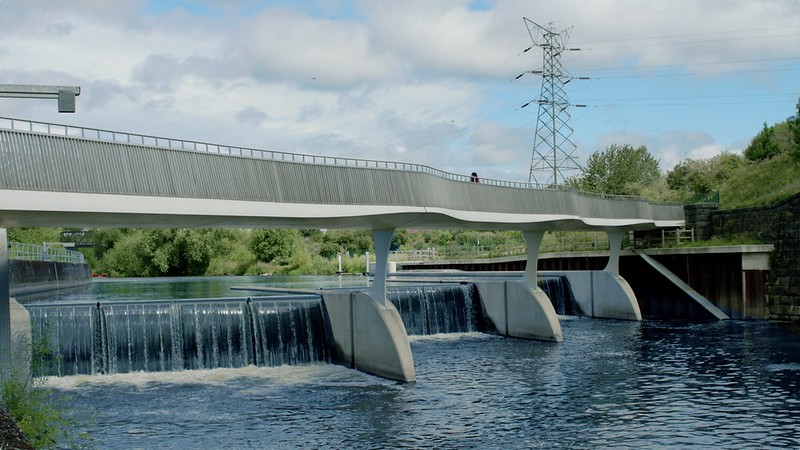 Professor Peter Goodhew CBE FREng, Chair of the Engineering X engineering skills programme, argues that with the global growth in critical infrastructure comes the need for global collaboration to ensure that all countries develop the engineering capability and capacity to maintain and operate such infrastructure in a safe and sustainable way.
Professor Peter Goodhew CBE FREng, Chair of the Engineering X engineering skills programme, argues that with the global growth in critical infrastructure comes the need for global collaboration to ensure that all countries develop the engineering capability and capacity to maintain and operate such infrastructure in a safe and sustainable way.
Every day around the world more than 1000 people die due to an accident at work. Moreover, data from the International Labour Organisation show that in many developing economies fatal occupational accidents are actually increasing.
Guest blog: Engineering X reflects a professional rethink
The relatively rapid construction of new critical infrastructure is thought to be a causal factor. Low income and newly industrialised countries are investing huge amounts in critical infrastructure and new technologies to accommodate their increasing populations and to support their growing economies.
The full impact of these large-scale investments cannot be reached if countries do not also develop the capability and capacity to maintain and operate such infrastructure. A lack of investment here can result in potentially serious consequences for the safety of life and property.
In many countries, there is a severe lack of such engineering and technical capacity — a skills gap that is exacerbated by the introduction of new and emerging technologies, and by a reliance on multinational organisations and temporary, non-domestic skilled labour rather than on a local workforce.

Without intervention, the pattern of increasing occupational accidents or fatalities and other safety issues is likely to continue. This is why Engineering X launched the mission Engineering Skills where they are Most Needed (ESMN) to support the delivery of skills and education programmes to increase engineering skills capacity, enhance safety standards, and ensure infrastructure remains safe and fit for purpose.
Countries can learn from each other
In truth, of course, as the pace of technological change accelerates, no nation can afford to ease up on its efforts to conduct engineering in a safe and innovative way. The need to come up with new and better technologies and infrastructures to achieve a safer and more sustainable way of living on our planet is a challenge all countries share and must tackle together.
Guest blog: Getting to grips with complex systems
The ESMN mission is driven by concerns for safety in its widest sense. Not just physical safety in the development and operation of infrastructure, but also cyber safety in the growing digital domain. Our main premise is that improvements will come from attitudes that are instilled in education and that is why the programme focuses on the development of skills.

Many factors can contribute to a country’s engineering strength and the development of a pipeline of engineering talent and skills to match growing and diverse requirements. We need evidence and insight to better understand the areas where engineering capacity and capability to address safety challenges is most lacking, and to identify areas where changes need to be made.
For this reason, in 2019, we commissioned the Global Engineering Capability Review that provided a broad assessment of the extent to which nearly 100 countries are able to do safe and innovative engineering. Our aim was to help countries to learn from the achievements of others and to benchmark their progress towards remedying natural, economic and social problems in a safe and sustainable way. We also hoped to provide a baseline to help people working in education, policy and industry to work together on common challenges and identify and address capability gaps that are barriers to safe and sustainable development.
Quality rather than quantity
The review highlighted that often it is not the number of engineers in a country that is the problem. Rather, it is that their training and skills are not fit for purpose and often insufficiently informed by industrial and employer collaboration.
Guest blog: transforming systems through partnership
This need to focus on quality rather than quantity is therefore behind two of the mission’s other initiatives. We have supported a programme of grants for high impact, innovative projects in eligible countries that develop domestic engineering capability to build, operate and maintain critical engineering infrastructures safely and that support the safe adoption of emerging technologies. Projects that have received grants to date include ones focusing on electric vehicle battery safety in Indonesia, on fire engineering for Africa and on house building site practices in Vietnam and Laos. Several projects involve encouraging women and other under-represented groups to participate in safer engineering.

We have also established Safety Champions—a network of engineering educators from low- and middle-income countries who have high potential for leadership in their discipline and with an outstanding and proven record of excellence in engineering education. The aim is to help them to improve the quality of teaching and learning in engineering education institutions and enhance safety and sustainability in engineering practice in the areas of the world which are most in need, and then to share their experiences with others around the world.
We need to find out more about the known unknowns
The main finding of the capability review was that there is a clear need for a stronger evidence base and further insight. Many countries struggle to collect and report accurate data on a variety of indicators that could support safe and innovative engineering. We are planning a follow-up to the 2019 capability review and are currently seeking to commission a survey to assess what information would be most useful for our target audiences.
Governments should be encouraged to collect more and better data on their engineers and engineering requirements. Global ambitions on net zero, infrastructure and digitalisation are threatened if we do not have the number and diversity of people with engineering and technical skills needed to deliver them safely.
The closing date for Engineering X ESMN Impact Grants 2022/23 is 31 January 2022
This is the latest in a series of guest blogs from experts involved in the Royal Academy of Engineering’s Engineering X programme, an international collaboration founded with Lloyd’s Register Foundation that aims to bring together some of the world’s leading problem-solvers to address the great challenges of our age.





Poll: Should the UK’s railways be renationalised?
Rail passenger numbers declined from 1.27 million in 1946 to 735,000 in 1994 a fall of 42% over 49 years. In 2019 the last pre-Covid year the number...